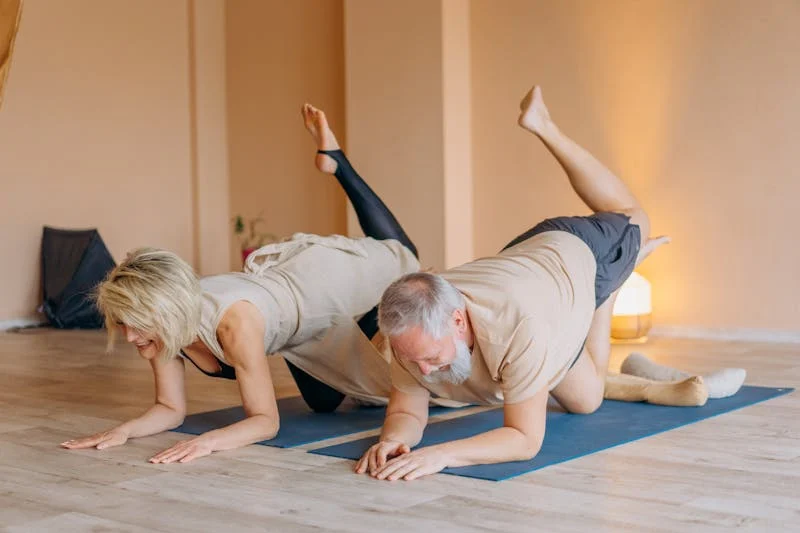In a world where drug use and addiction have become increasingly common, many are searching for healthier alternatives to cope with stress and emotional pain. Yoga and meditation stand out as powerful tools in this journey.
These practices offer not just physical benefits but also profound mental and emotional healing. By incorporating yoga and meditation into daily life, individuals can find healthier ways to manage cravings, reduce anxiety, and promote overall well-being.
Understanding Addiction
Addiction is a complex interplay of physical and psychological factors. Many turn to drugs as a coping mechanism for stress, trauma, or mental health issues. The desire to escape from reality can lead to a cycle of dependence that is difficult to break.
Finding healthy coping mechanisms is crucial in addiction recovery. Activities that promote relaxation and self-awareness can significantly help those struggling with substance abuse. For deeper insights, check out why is yoga a sin?.
Benefits of Yoga as an Alternative
Physical Health Improvements: Yoga promotes physical fitness, which can lead to improved health and reduced cravings. Engaging in regular yoga practice enhances strength, flexibility, and endurance. For beginners, learning about how to become a certified yoga instructor might be a valuable step.
Mental Clarity and Focus: Practicing yoga can sharpen concentration and improve mental resilience. The combination of movement and breath control helps clear the mind, allowing individuals to focus on recovery and personal growth.
Benefits of Meditation as an Alternative
Mindfulness and Emotional Regulation: Meditation teaches mindfulness, enabling individuals to observe their thoughts and emotions without judgment. This practice fosters emotional regulation, helping people manage stress and anxiety more effectively. For additional support, consider exploring what does the Bible say about meditation and yoga?.
Reducing Withdrawal Symptoms: Meditation has been shown to ease cravings and withdrawal discomfort. By calming the mind and body, it creates a more supportive environment for recovery.
Combining Yoga and Meditation
Combining both practices can enhance their benefits. The physical movement of yoga complements the mental focus of meditation, leading to a more holistic approach to recovery. Beginners can start by dedicating a few minutes each day to these practices, gradually increasing the duration and intensity as they feel comfortable.
Real-Life Examples
Many individuals have turned to yoga and meditation during their recovery journeys. These practices provide a sense of community, purpose, and connection to oneself. Whether it’s a local yoga class or guided meditation sessions, each step taken towards these alternatives can make a significant difference.
Creating a Supportive Environment
Creating a supportive environment is crucial when integrating yoga and meditation into recovery. Surrounding oneself with positive influences, such as supportive friends, family, or community groups, can make a world of difference. Joining a local yoga studio or online community focused on mindfulness can help reinforce commitment to sobriety.
Practical Tips for Incorporation
If you’re considering yoga and meditation as alternatives to drug use, here are some practical tips:
- Start Small: Begin with just 5-10 minutes a day of meditation or gentle yoga.
- Consistency is Key: Set a regular schedule, treating it like an important appointment.
- Explore Different Styles: There are various styles of yoga, such as Hatha, Vinyasa, or restorative. Try different classes to find what resonates with you.
- Seek Guidance: Online platforms like certifiedyogateacher.com offer classes and resources tailored for all levels, which can help ease the transition into regular practice.
The Holistic Benefits
Yoga and meditation are not just about physical health; they also support emotional healing and spiritual growth. These practices encourage individuals to connect with their inner selves and develop a sense of peace that is often missing during addiction.
Finding Community Support
Communities built around yoga and mindfulness can provide invaluable support. Sharing experiences with others who understand the challenges can foster a sense of belonging. Whether it’s through local classes or online platforms, connecting with like-minded individuals can motivate and uplift you during recovery.
Conclusion
Incorporating yoga and meditation into your life can serve as powerful alternatives to drug use. These practices not only support physical health but also promote mental clarity and emotional well-being. By committing to regular practice, seeking community support, and creating a conducive environment, individuals can significantly enhance their recovery journey.
If you want to dive deeper into how these practices can benefit you or someone you know, consider exploring more about how often should you do yoga for additional insights.


